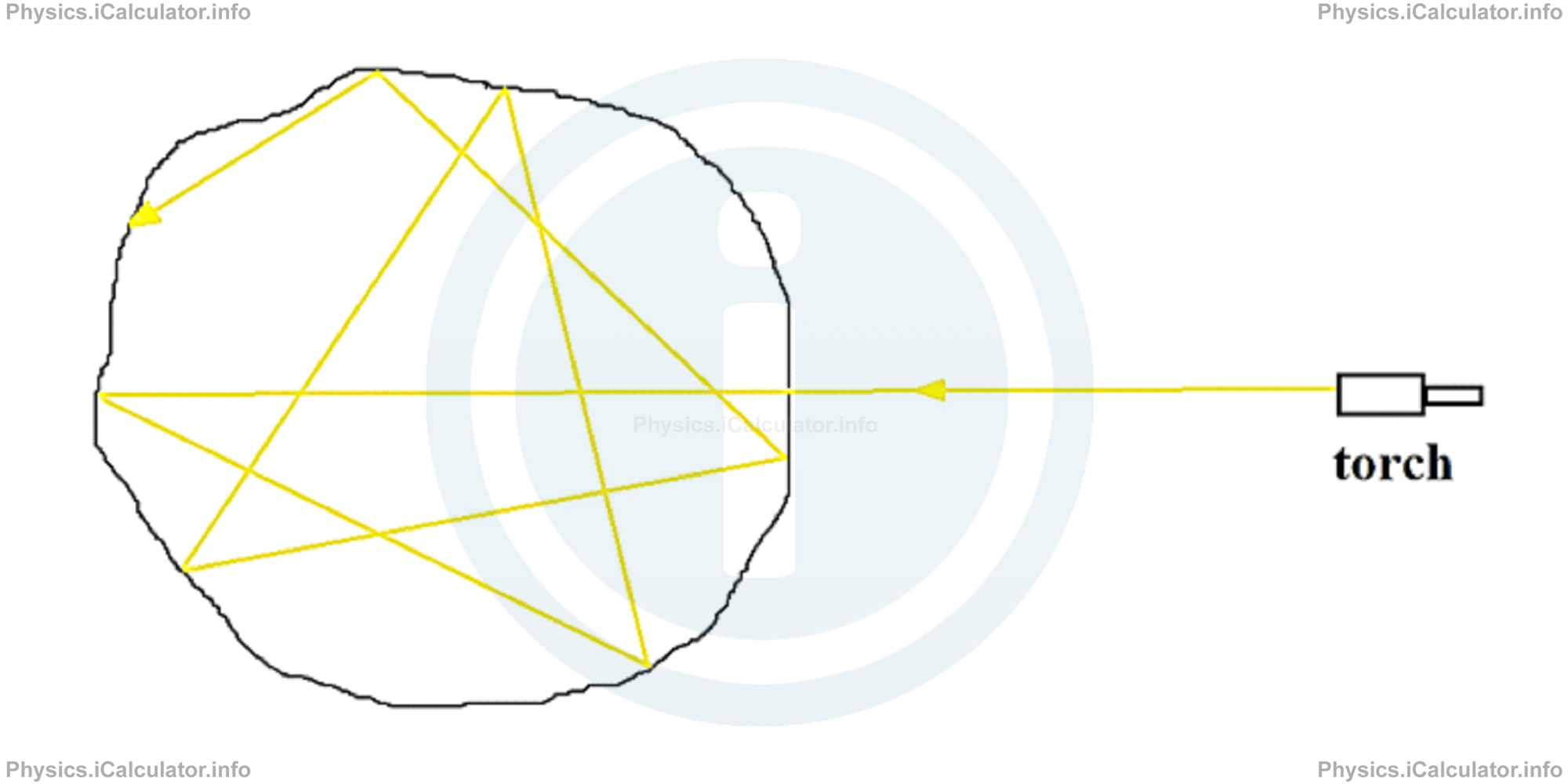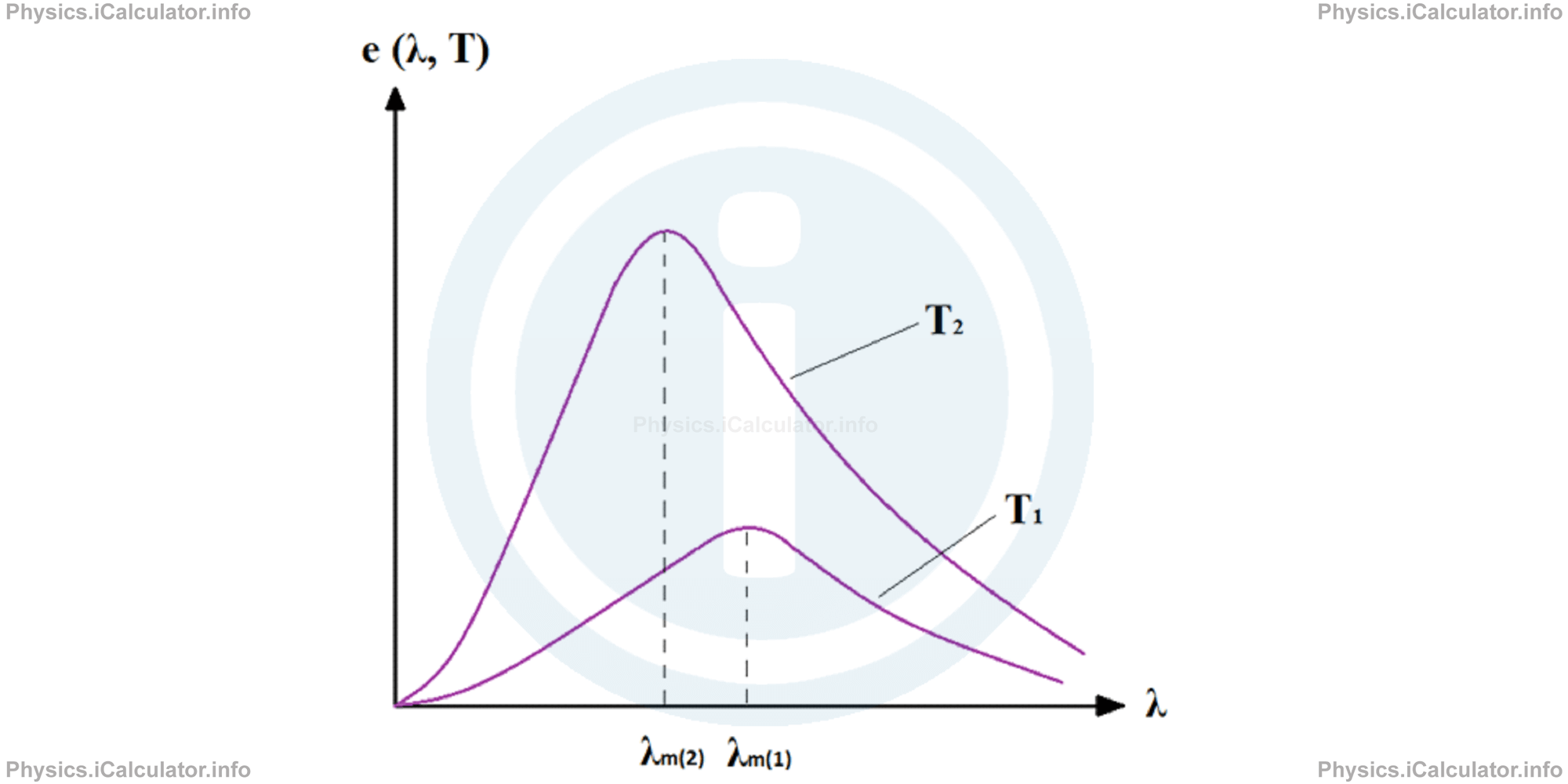Menu
Physics Lesson 19.1.3 - Radiation of a Black Body
Please provide a rating, it takes seconds and helps us to keep this resource free for all to use
Welcome to our Physics lesson on Radiation of a Black Body, this is the third lesson of our suite of physics lessons covering the topic of Thermal Radiation. Photon as the Quantum of Light, you can find links to the other lessons within this tutorial and access additional physics learning resources below this lesson.
Radiation of a Black Body
In tutorial 12.3 "Reflection of Light", we have explained that when light rays fall on the surface of an object, it may reflected or absorbed depending on the physical features of that surface such as roughness, brightness or colour. Thus, rough and dark colour surfaces absorb more light radiation than smooth and bright surfaces. Moreover, a good absorber of radiation may be a good emitter in high temperatures. (Emission involves the release in the environment of some part of the absorbed radiation). From this condition, it is obvious that the emission (which is nothing else but the radiation of EM waves from an object to the surroundings), depends on the temperature of the object itself. Higher the temperature of the object, higher the rate of emission (radiation) of EM waves.
A completely black (and rough surface) object is the best absorber (and therefore the best emitter at high temperature) of light rays. However, an object is not necessary to be black and rough to be an ideal absorber of light (EM radiation). In practice, there is no need to have a black colour object to obtain an ideal absorber of light; we can achieve this using an irregularly shaped cavity with a very thin hole, just enough to allow a light ray enter in the cavity, as shown in the figure.

If a light ray emitted from a light source (for example a torch) enters in the small hole of cavity, it experiences a number of reflections in the inner walls but it cannot escape from the cavity anymore. The light ray loses part of its energy after every collision with the internal walls of cavity until it is completely absorbed by these walls. If more and more rays enter in the cavity through the small hole, the cavity will behave like a perfect absorber of radiation, just like a black body.
Different objects have different reflecting abilities. This ability is mathematically represented through the reflection coefficient r, which in general depends on the incident wavelength and temperature of the object. On the other hand, the absorption coefficient of an object is denoted by a. They are dimensionless coefficients between 0 and 1. From the law of conservation of energy, we have
An ideal mirror has r = 1 and a = 0, while an ideal black body has r = 0 and a = 1.
We denote the spectral emissivity of a black body by e0(λ). By the end of XIX century, the dependence of spectral emissivity of a black body, e0(λ) from the light wavelength, λ has been found experimentally. The graph of this dependence for two different temperatures T1 and T2 (T1 < T2) obtained through experiments has the shape shown below.

Experiments show that for an object in thermal equilibrium we have
where e is the object's emissivity. The above equation is known as the Kirchhoff's Law of Emissivity. From this law, it is obvious that the emissivity of an object is less than the emissivity of a black body for the same wavelength of light and temperature.
In the graph shown above, it is evident that the position of maximum spectral emissivity shifts due left (towards smaller wavelengths) with the increase in object's temperature while the emissivity itself increases. In addition, the area under the graph increases with the increase in temperature.
These features of the e vs λ graph express the laws of thermal radiation of a black body discovered experimentally by Stefan, Boltzmann and Wien. Years later, Max Planck explained these laws theoretically.
You have reached the end of Physics lesson 19.1.3 Radiation of a Black Body. There are 6 lessons in this physics tutorial covering Thermal Radiation. Photon as the Quantum of Light, you can access all the lessons from this tutorial below.
More Thermal Radiation. Photon as the Quantum of Light Lessons and Learning Resources
Whats next?
Enjoy the "Radiation of a Black Body" physics lesson? People who liked the "Thermal Radiation. Photon as the Quantum of Light lesson found the following resources useful:
- Black Body Feedback. Helps other - Leave a rating for this black body (see below)
- Modern Physics Physics tutorial: Thermal Radiation. Photon as the Quantum of Light. Read the Thermal Radiation. Photon as the Quantum of Light physics tutorial and build your physics knowledge of Modern Physics
- Modern Physics Revision Notes: Thermal Radiation. Photon as the Quantum of Light. Print the notes so you can revise the key points covered in the physics tutorial for Thermal Radiation. Photon as the Quantum of Light
- Modern Physics Practice Questions: Thermal Radiation. Photon as the Quantum of Light. Test and improve your knowledge of Thermal Radiation. Photon as the Quantum of Light with example questins and answers
- Check your calculations for Modern Physics questions with our excellent Modern Physics calculators which contain full equations and calculations clearly displayed line by line. See the Modern Physics Calculators by iCalculator™ below.
- Continuing learning modern physics - read our next physics tutorial: The Photoelectric Effect
Help others Learning Physics just like you
Please provide a rating, it takes seconds and helps us to keep this resource free for all to use
We hope you found this Physics lesson "Thermal Radiation. Photon as the Quantum of Light" useful. If you did it would be great if you could spare the time to rate this physics lesson (simply click on the number of stars that match your assessment of this physics learning aide) and/or share on social media, this helps us identify popular tutorials and calculators and expand our free learning resources to support our users around the world have free access to expand their knowledge of physics and other disciplines.
Modern Physics Calculators by iCalculator™
- Characteristic Em Wavelength Calculator
- De Broglie Wave Calculator
- Rayleigh Jeans Relation Calculator
- Energy Of Photons Calculator
- Intensity Photoelectric Effect Calculator
- Kinetic Photoelectric Effect Calculator
- Light Pressure Calculator
- Radiation Black Body Calculator
- Stopping Voltage Photoelectric Effect Calculator
- Uncertainty Calculator
- Wave Width Calculator
- Scattered Radiation Compton Effect Calculator
- De Broglie Packet Calculator